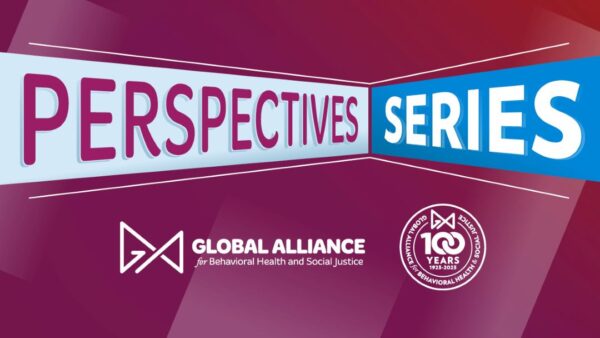Hispanic Heritage and Behavioral Health

This year, Hispanic Heritage Month falls during the last stretch of a presidential election, which will no doubt amplify discussions about national-level issues concerning U.S. Hispanic/Latine communities. Hispanic/Latines currently account for just over 19% of our national population. With a total of nearly 64 million individuals, it is the largest minority group in the nation and one of the fastest growing – even in states like North Dakota, where the population grew by over 148% between 2010 and 2020 (links to Pew Research Center, 2022). More surprisingly for some, the share of Hispanics/Latines born in the U.S. is now approximately 67%, reflecting reduced immigrant flows from Latin America and the Caribbean in recent decades and other demographic changes. As the U.S.-born daughter of immigrants from Central America and a first-generation Latina researcher, it’s important for me to take this month of heritage celebration as an opportunity to consider the behavioral health and social justice issues concerning Hispanic/Latine communities, which are very much part of this country’s social fabric.
As with other historically marginalized groups in this country, Hispanics/Latines experience persistent behavioral health disparities and other inequities that reduce their long-term well-being over the life course despite considerable community strengths and several protective factors. Such inequities were especially evident from 2020 to 2021, when the Covid-19 pandemic emerged, changing everyday life for millions of Americans and resulting in the highest rates of infection and mortality for Hispanics/Latines and other communities of color. During this time, researchers and practitioners – especially those with promotor de salud, or community health worker, programs – worked to learn more about the needs of these communities and to improve health system responses to infection and illness. Needs assessments conducted at national and local levels identified serious concerns about disruptions to employment and thus, about the ability to afford housing, utilities, and food for community members and their families. These concerns were compounded by a lack of certainty about where to safely seek medical and behavioral health care, especially for a sizeable group of Hispanics/Latines with limited access to bilingual and/or bicultural providers. Needs assessments also recorded documented reports of intense grief and bereavement, and other mental health concerns exacerbated by the rapid increases in infection and mortality in U.S. Hispanic/Latine communities across the country. Research now corroborates these concerns, finding higher rates of job loss and financial insecurity among Hispanics/Latines, as well as a death rate that was1.6 times higher than that of white Americans between 2020 and 2022.
Documenting whether the behavioral health conditions have worsened for Hispanics/Latines highlights some of the unique aspects of these inequities. For instance, researchers continue to examine the “Hispanic paradox”, which shows high rates of unmet mental health needs in a population with rates of psychiatric disorders that are similar and in some cases, lower, than those of White Americans. Disparities in behavioral health status and access to needed care differ by age, country of origin, gender, race, and/or geographic area of residence among others. For instance, we know that in the last few decades rates of suicidality and substance increased in Hispanic/Latine children and youth at higher rates when compared to other racial/ethnic groups. Finally, socioeconomic and other structural factors work together to create barriers to care for U.S. Hispanic/Latines. These include higher rates of poverty, lower rates of healthcare coverage, and shortages of bilingual and bicultural providers, especially in states and regions that have recently experienced a surge in immigrants from Spanish-speaking Latin American and Caribbean countries – many of which are also experiencing workforce shortages.
Despite these challenges and concerning election year rhetoric about immigrant communities, there is much to look forward to. For instance, the published research literature on behavioral health interventions tailored for the cultural and linguistic needs of Hispanics/Laitnes has grown in the last decade. In addition, some policymakers have started to emphasize the importance of addressing the structural and cultural factors that shape pathways to care and treatment engagement in this group. Perhaps most important to consider in this regard are the strengths and resilience of U.S. Hispanic/Latine populations. Hispanics/Latines have been found to engage with health and human service systems when service modalities are tailored to them. A key example is that although they had low Covid vaccination rates compared to other racial/ethnic groups, the rates of vaccination for Hispanics/Latines have now surpassed those of white Americans (links to Garcia & Sáenz, 2023). They are also more likely to engage in behavioral health care provided or recommended by primary care providers. Bilingual and bicultural Hispanic/Latine providers have been at the forefront of using community rooted knowledge and practices to tailor services to diverse Hispanic/Latine communities around the country. Such work suggests that when we take the time to explain how services and treatment can be helpful in a culturally and linguistically responsive manner– taking patient preferences into account –engagement in needed services increases. Emerging research also suggests that Hispanics/Latines can make important contributions in the co-design, implementation, and evaluation of behavioral health interventions and programs. This Hispanic Heritage Month, we should celebrate these opportunities for engaging with communities equitably to support transformative improvements in Hispanic/Latine behavioral health through research, policy, and advocacy. What we are learning in this regard might serve as a useful blueprint for election year politics, which often reduce communities like mine to caricatures and ignore their contributions to our society.
